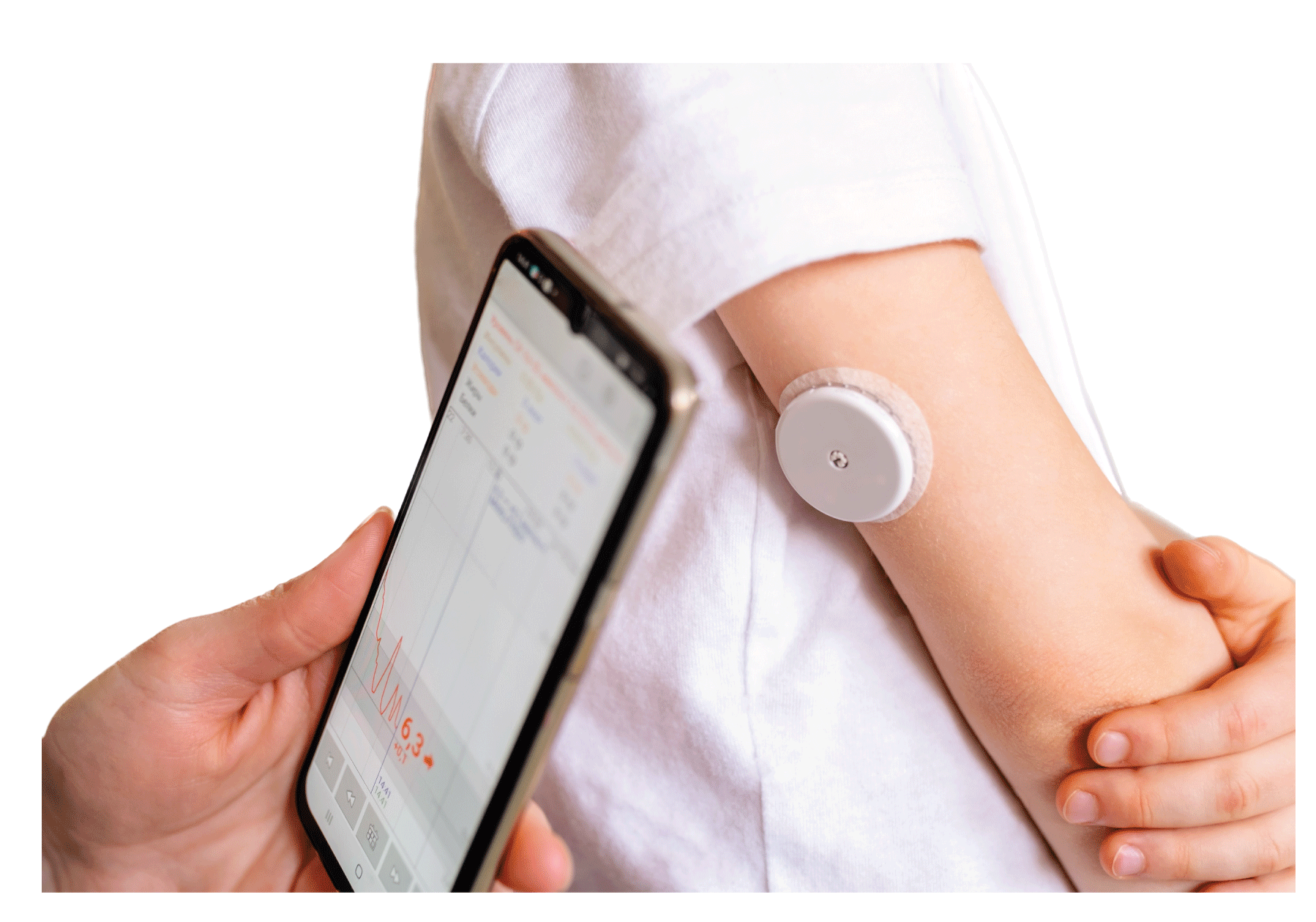CGM Awareness
Continuous Glucose Monitoring (CGM) Device
Improving outcomes for the patient in the hospital who has diabetes or hyperglycemia (Clubbs-Coldron, 2023).

CGM: A wearable device to help manage blood sugar in real time
Our goal is to Educate the healthcare Team – Last Updated Agust 7, 2023

What are the benefits of the CGM device?
Decreases
Frequency of fingersticks
Hyperglycemic episodes
Hypoglycemic episodes
(Perez-Guzman, 2021)

History of the CGM

Minimed 1999
Minimed marketed the first FDA approved CGM in 1999 for outpatient use. This implantable device could last 3 days, with calibration needed every 6-12 hours (Didyuk et al., 2021).
Major companies in the USA
Today there are 4 companies in the USA that offer CGMs: Abbott, Dexcom, Medtronic, and Senseonics Eversence (Continuous, 2020).
Lots of Progress
The early CGM had wires and needed a receiver to get the blood sugar readings that only went to the person’s healthcare provider. Today, these devices are wireless and can transmit the blood glucose readings to the person’s app on their smart phone. In addition, they can now be implanted for up to 2 weeks at a time with no calibration needed, unless there is a discrepancy like during dehydration. The CGM recently received FDA approval for hospital use under certain conditions. Research is ongoing to make the future CGM device with a longer life span, user friendly, and inexpensive (Didyuk et al., 2021).
More About the CGM Device
CGMs are a wearable device that has significantly improved outcomes for people with diabetes outside of the hospital setting. It comprises a sensor that is implanted just under the skin. It then transmits blood sugar levels 24 hours a day to either a wearable device or a smart phone. These devices are being used in the hospital setting. Research is showing that these devices have been improving patient outcomes for people with the need for blood sugar management. Responding to hyperglycemia or hypoglycemia right away can prevent poor patient outcomes (Clubbs-Coldron, 2023).

About the Author

Vincent Alvarez, RDN, CNSC, NSCA-CPT
Clinical Nutritionist for SharpHealthcare, San Diego, CA
An accomplished Registered Dietitian working in the hospital setting for over 25 years. He provides direct patient nutrition care for a variety of health challenges, which include people who need to manage their blood sugars. He welcomes the introduction of the CGM in the hospital setting and realizes that it will be a team effort to implement it correctly and safely. He has no conflict of interest or bias with any CGM device companies.
References
Clubbs-Coldron, B., Coates, V., Khamis, A., & MacRury, S. (2023). Use of continuous glucose monitoring in non-ICU hospital settings for people with diabetes: a scoping review of emerging benefits and issues. Journal of Diabetes Science and Technology, 17(2), 467-473.
Continuous Glucose Monitors (CGM). (2020, August 14). Diatribe. https://shorturl.at/avwTX
Didyuk, O., Econom, N., Guardia, A., Livingston, K., & Klueh, U. (2021). Continuous glucose monitoring devices: Past, present, and future focus on the history and evolution of technological innovation. Journal of Diabetes Science and Tchnology, 15(3) pp. 678-683.
Perez-Guzman, M.C., Shang, T., Zhang, J.Y., Jornsay, D., & Klonoff, D.C. (2021). Continuous glucose monitoring in the hospital. Journal of Endocrinology and Metabolism, 1(36), pp240-255.

